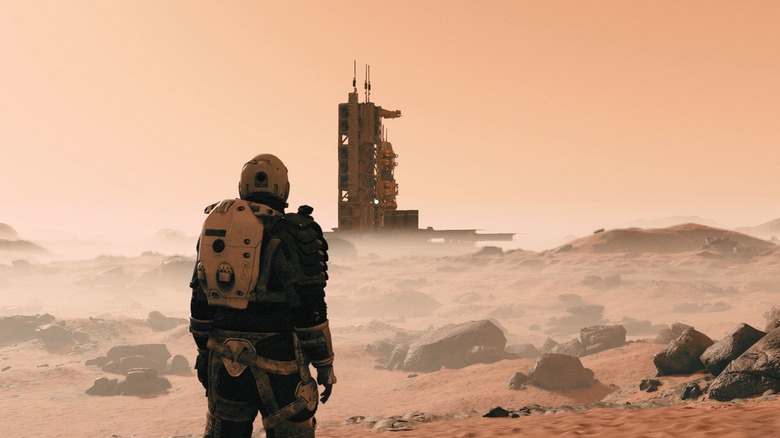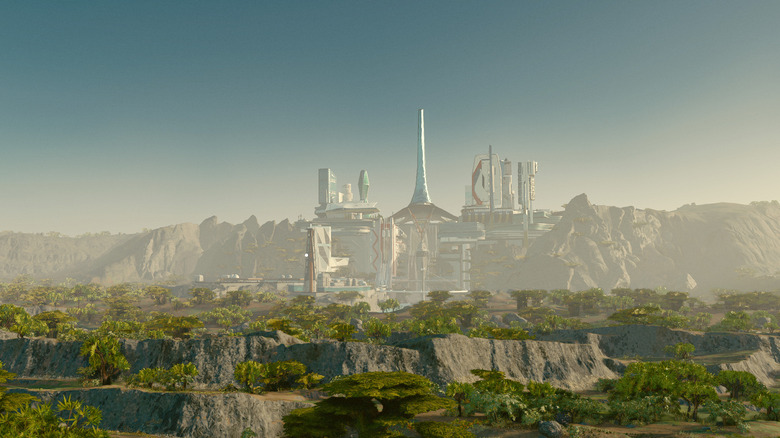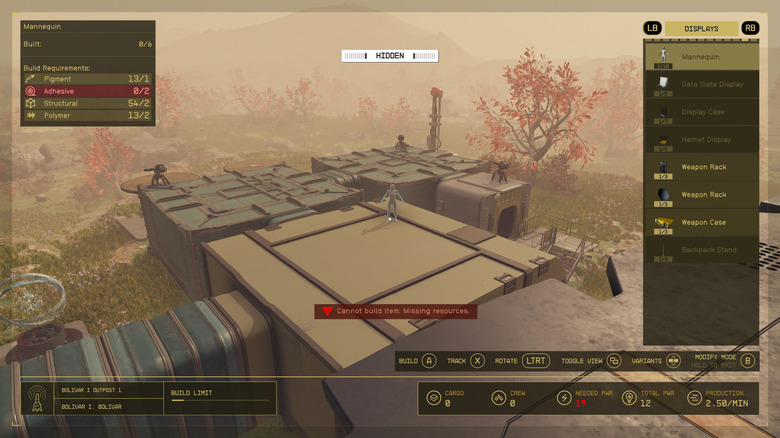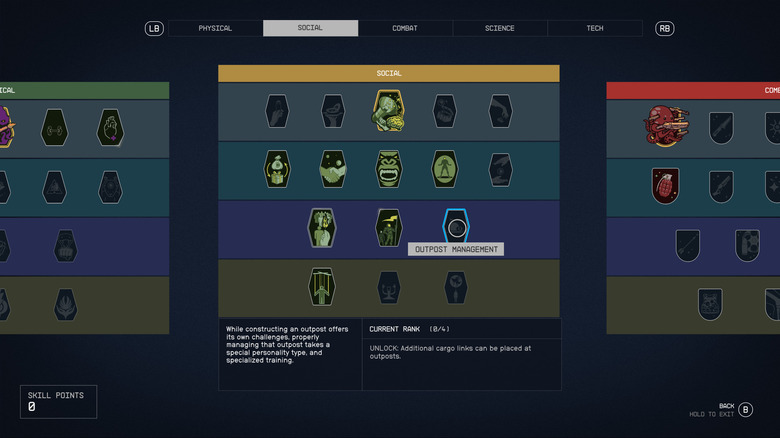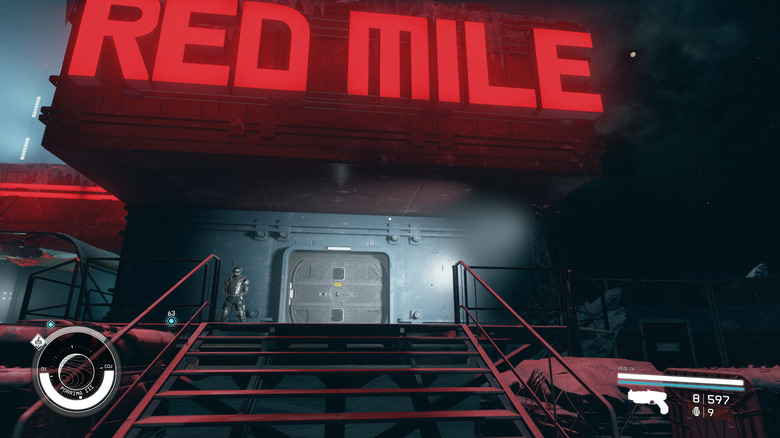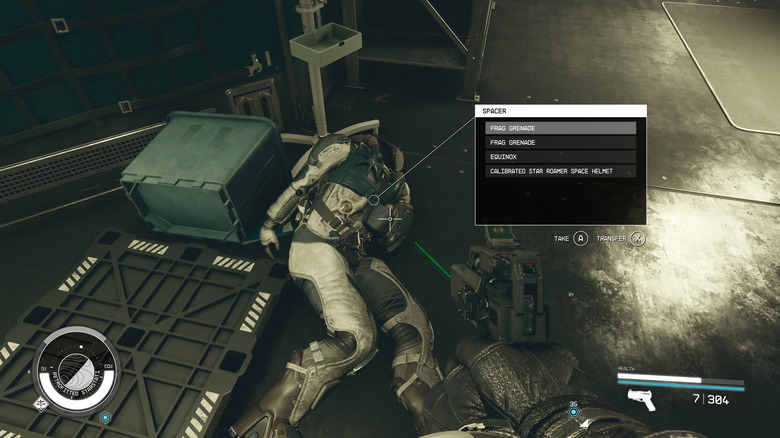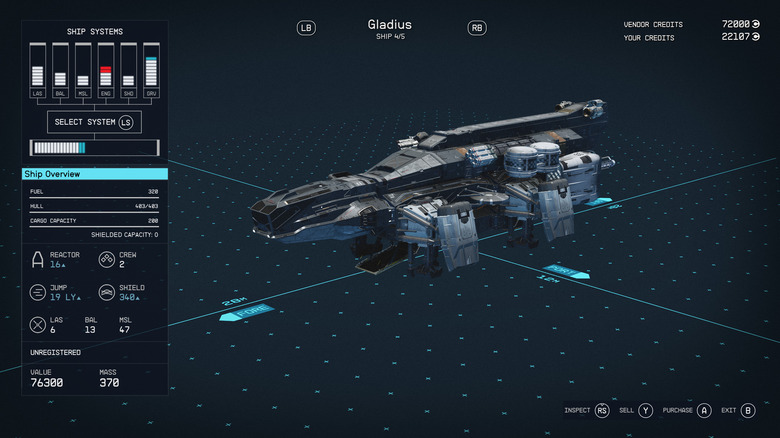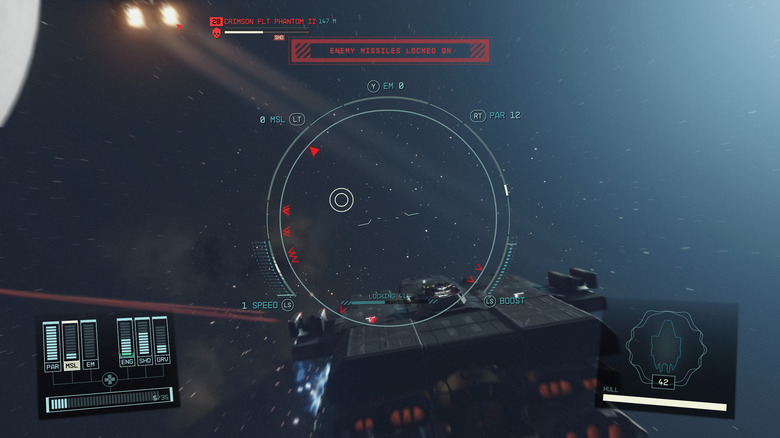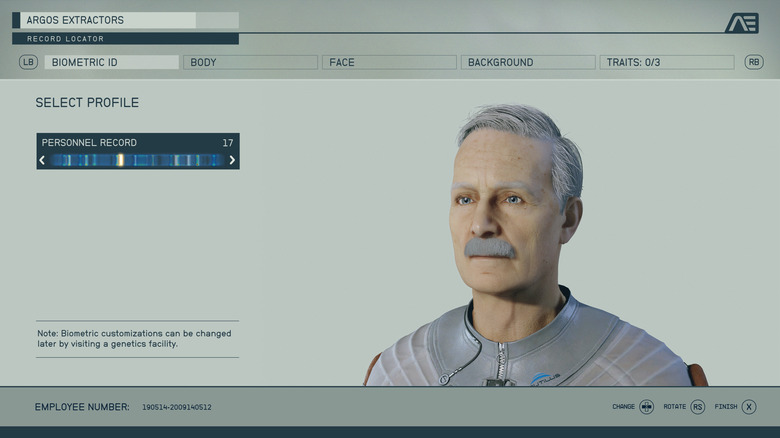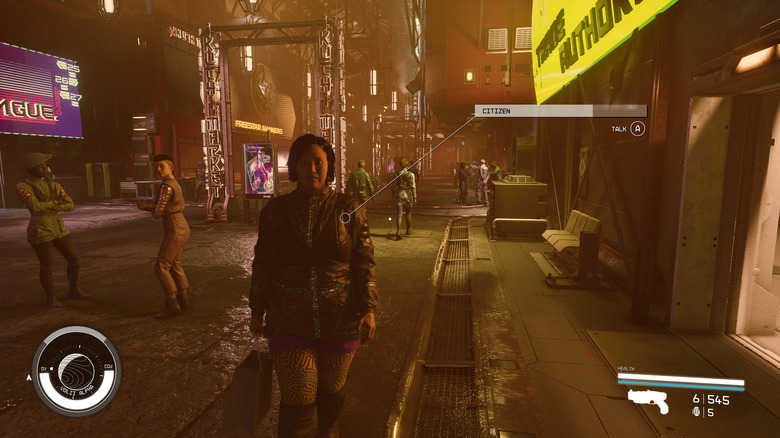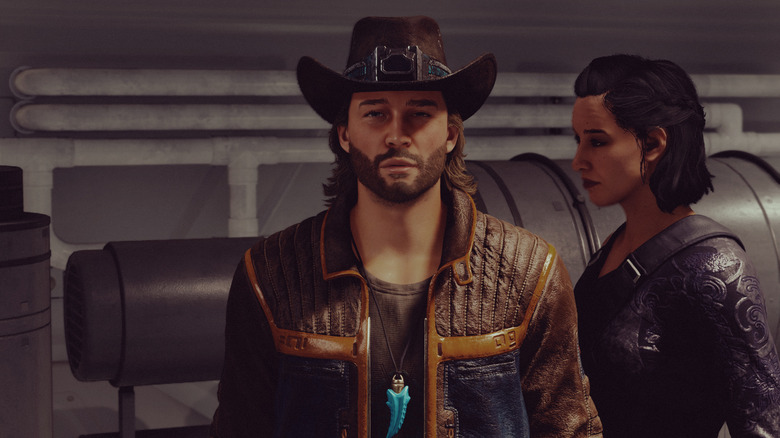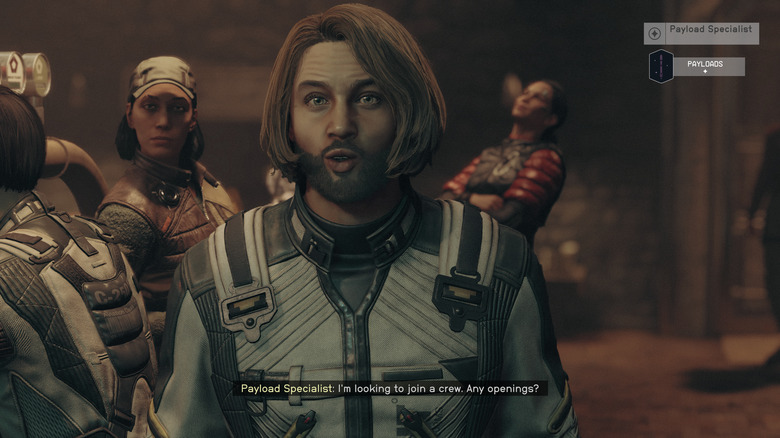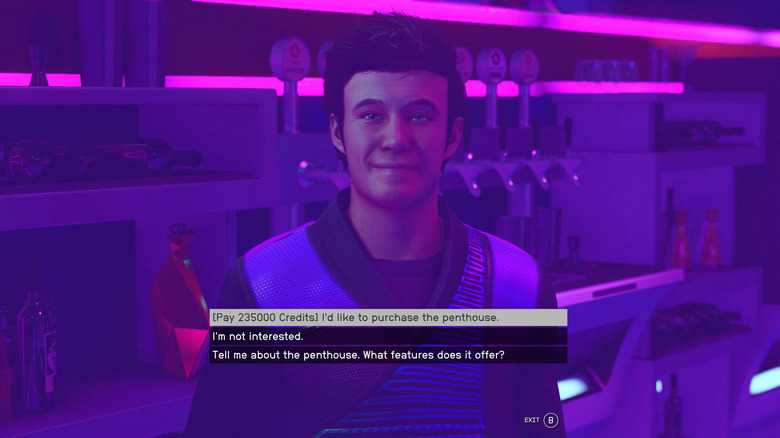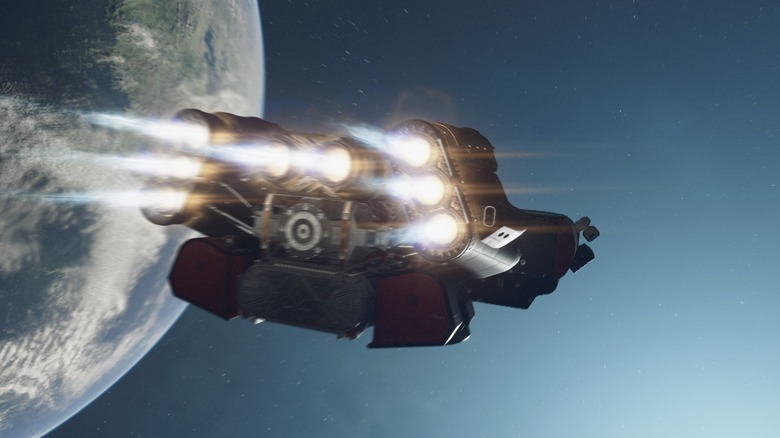Starfield Review: Is Bethesda's Space Epic Ready For Launch?
- Seemingly endless entertainment in a massive universe
- Character and shipbuilding is in-depth
- Some of the best storylines of any Bethesda game
- General gunplay is solid
- Limited number of cities
- Basic NPCs feel less alive than in previous games
After decades of planning, several delays, and plenty of hype, Todd Howard's magnum opus is available to play. "Starfield" is certainly ambitious, featuring over 1,000 planets along with the ability to build a custom spaceship and take it between them. Plenty has also been promised in relation to the plot, random adventures, and other things you can stumble across in this vast universe.
Since receiving our review copy of the game, we've spent over 100 hours in "Starfield." This is more than enough to complete some games ten times over, but it genuinely feels like we've only scratched the surface of what the game has to offer. If you're the sort of person who likes to 100% everything on one character, then you're going to have a mammoth task on your hands.
Despite the fact we haven't visited every system, never mind stepped on every planet, we've still formed some strong opinions on "Starfield" — here's what we think of Bethesda's most ambitious RPG yet.
Civilization seems a bit limited
In real life, space is vast and empty, but in "Starfield" it feels pretty crowded. You'll bump into pirates, cruise ships, grandmothers with food, people from earlier quests, and plenty of other beings while hopping through the universe. If space itself isn't your thing, there are numerous settlements, abandoned facilities, mining colonies, and space stations to explore.
However, the cities are pretty limited. The first one you're likely to visit is New Atlantis, the biggest city in the game and the biggest urban environment Bethesda has ever built that isn't mostly comprised of nuclear ruins. The city can be navigated with a public transit system, though you can walk or boost pack between most of its districts. Despite being large by Bethesda standards, it does feel a little enclosed — you can sprint between its two furthest points pretty quickly.
The other two major locations, Akila City and Neon, are even smaller. Still, small but action-packed is far preferable to large, empty cities and you can spend hours working through the side quests of each district. As for planets and star systems, most of the explorable areas are procedurally generated. In terms of how far you can travel, planets are so far apart that going between them without using your faster-than-light grav drive would take real-time weeks or months. The on-planet locations also include vast explorable areas, which are so large that players not specifically trying to find the edge aren't going to notice.
You can build your own base
As you might imagine, "Starfield" is about much more than just completing missions and exploring the galaxy. You can also settle down on a nice rock somewhere to fend off the hordes of angry alien creatures ready to break in and eat your face while you sleep. More peaceful worlds are also available, as are ones with functioning atmospheres.
You can set up a base on pretty much any patch of unused land on seemingly any world you can land on — though less hospitable planets may require you to rank up certain skills before you can settle there. It's also possible to maintain multiple bases, and you can use them to farm resources, store items, or just hang out if the void of space starts to bore you.
Companions can also be stationed at these locations, and followers with relevant skills can provide some decent bonuses. Companions can also be reassigned at will, so you can use a base to keep them out of trouble when they aren't on your ship.
The skill system allows for complex builds
It seems like Bethesda comes up with a new leveling system each time it launches a game, and "Starfield" is no exception.
When you pick your background during character creation, you'll get three level-one skills included. Each level gets you another skill point, which you can use to level up an existing skill or unlock a new one. Each perk has four ranks, and there are challenges that must be completed before the next rank is unlocked. For example, you have to notch so many pistol kills between each rank of the Pistols perk. There are five skill trees: Physical, Social, Combat, Science, and Tech. Each tree has four tiers, and higher tiers unlock each time four points have been put into a tree.
While the system is simple on the face of it, you'll have to be smart in allocating points. With 82 skills in total — and four ranks in each skill — a character would need 328 points in total to max everything out. Knock off a few points for the three skills you start with and the odd one you may pick up as a quest reward, and you'd still need to get past level 300 to unlock everything. As a result, thinking about the kind of character you want to build and planning your perk selection becomes important.
Many perks just provide boosts to a gameplay element, like healing or damage, while some of the social skills unlock new gameplay elements. Some even have really useful features like temporary invisibility that can come in handy later in the game.
Plot, plot everywhere
The main story starts slow but soon draws you in. There are twists, decisions with consequences, and a couple of very well-written missions that rank amongst the best we've ever seen — in any game. Yes, there's the odd line that looks like it was penned by a teenager, but overall the writing in the main quest of "Starfield" is solid. Things are arguably even better outside the main quest, and you can expect faction questlines to take you between 10 and 15 hours to complete.
The quests themselves have a lot of depth, both within the main story and in the many branching arcs. There are multiple ways to tackle each questline — go in guns blazing, use stealth, or talk your way through things. There are also choices that have far-reaching consequences. Beyond the main and faction missions, there are also some refreshingly beefy standalone quests that can take hours of your time if you're really trying to rinse the most out of the content.
In terms of broader impact, your background, perk choices, trait choices, completion of the main quest, and membership in certain factions will all spawn unique dialogue options at various points in the game. You'll also run into characters you've previously encountered out in space. Whether these encounters are friendly or not depends on your previous interactions with them.
The combat is fluid, for the most part
"Starfield" has the best gunplay we've encountered in a Bethesda game. It's still not "Call of Duty," but it's absolutely possible to get to a point where you're stabbing, shooting, and uppercutting people like a galactic John Wick.
Sadly, one thing that does seem a little less effective in this game is stealth. While sniping an entire compound from a hill is easy enough, getting stealthy melee kills or even just sneaking past low-level opponents is often frustratingly difficult. The same goes for the speech-based combat options. Using Intimidate, Incite, or Diplomacy all involve getting relatively close to an opponent before lining up your scanner and navigating a couple of menus while lead or lasers are flying back in your direction.
Armor, for the most part, comes from a combination of skill choices and your space suit. Clothing offers small stat bonuses and little else. Boost packs also add a new element to combat and are extremely useful in a number of ways. If you hear a mine about to go off or see a grenade land near you, you can instantly boost to safety. They are also handy for highly mobile and lightning-quick assaults on enemy positions or getting to high-up places with your sniper rifle.
Shipbuilding is extensive, but a little complex
The shipbuilding system is a central feature of "Starfield," and it allows for a lot of creativity.
The ships are modular, with many modules adding functionality to your vessel. This is how you add labs, workshops, crew space, passenger space, and medical services to your ship. Multiple weapon types, each with a different purpose, can also be added. Travel distance comes down to a combination of your "grav drive" and the number of fuel tanks you have on board, although the size of your ship can work against this. A powerful reactor is a must, as this component dictates what else you can attach and how much power you have to allocate.
However, if you just slap a bunch of modules together, your ship will look more like a jumbled heap of cargo containers than an Imperial Star Destroyer. This is where various bits of cosmetic trim come in, which you can use to make the whole ship more attractive. Paint jobs can also be added and adjusted for free, and you can rename your vessel. Ships can't be built from scratch, but you receive several throughout the game, and hijacking one isn't difficult. You can then delete everything and start from scratch that way.
This being said, building and upgrading ships is a huge money sink. Building an absolutely massive vessel must have cost us close to a million Credits throughout our main game, and it often made it harder to find our crew in the interstellar maze we accidentally constructed.
Space battles require skill — until you can afford particle beam turrets
At lower levels, you need to be quite skillful and have a good tactical mind to come out on top during space battles. The tactical element involves allocating your ship's power between your weapons systems, the engines, and the shields. You then have to use maneuverability and positioning to get the upper hand in a dogfight, especially when outnumbered.
In addition, a specific skill allows you to target individual parts of an enemy ship. Taking out an enemy's weapons stops them from attacking you, neutralizing their grav drive rules out any chance of escape, while blasting their engines gives you a chance to board and take the ship for yourself.
However, if you slap a beefy Class C reactor, a top-level shield, and some end-game weapons onto your ship you'll tear through high-level opponents like they're nothing. There are also some perks on offer that will boost the effectiveness of various ship components and unlock new ones.
Ships and characters may be customizable, but your clothes aren't
While "Starfield" offers a lot in the way of customization, the clothing on offer is a bit limited. Admittedly, Bethesda's clothing options have been a bit meh since the days of "Oblivion," which itself was a scaled-down version of what we had in "Morrowind." Basically, it's gone from the ability to wear odd shoes, gloves, and shoulder parts to just picking shirts, pants, and shoes — or being stuck with a range of pre-selected outfits. This may be performance-related, but you'd think there would be a way in this day and age to allow for a little more creativity in the clothing department.
Weapons, on the other hand, are highly customizable. You can add skins and mods to make your guns and blasters look and perform in a certain way. Space suits also benefit from changeable skins, but strutting around New Atlantis with your spacesuit on display feels a bit odd.
Character customization is also very in-depth, allowing you to fine-tune your appearance, body type, walking style, background, and traits. Everything is changeable in-game, aside from your traits — which are only removable when you meet the right character — and your background, which you're stuck with. Everything else can be modified at a plastic surgery clinic.
Some immersive aspects need work
Graphically, this is clearly a Bethesda game — albeit one that is more polished than "Fallout 4." Despite slightly more realistic-looking faces, most of the NPCs still list the uncanny valley as their main residence. They're human in appearance, but there's still something noticeably off about them. That said, certain subtle touches add a lot to the experience. NPCs don't stand there with their cold, dead eyes locked on you as you chat. Instead, there are subtle human-like gestures, stances, and twitches that help bring them to life a little more than we've seen in previous games.
Sadly, if there is still some degree of radiant storytelling or AI left then it's been massively toned down. Most NPCs have a spot to inhabit and stick to it. Some environments exist where NPCs will eat, read, or have conversations, but those aren't common. You'll still pick up quests by overhearing things on the street, but you'll overhear it from a static NPC. On the plus side, stores are open 24/7 which is convenient, especially when every planet has its own day and night cycle. Still, this may not be worth the trade-off, given how important immersion is to RPGs — although not every NPC you'll encounter is a lifeless husk.
The main companions are very well done
There are five main companions you'll meet through the Constellation arc, and the four that aren't robots are very well written. This isn't a Lydia from "Skyrim" sort of situation, as they all have extensive amounts of dialogue, backstories, interactions with other NPCs, and unique missions they'll ask for help with. "Fallout New Vegas" and "Fallout 4" both demonstrated major leaps forward in how companions are implemented and "Starfield" goes even further than that.
All four main companions are romanceable, if that's your sort of thing, and will otherwise form a close friendship with you should you keep them on your good side for long enough. You can add all of the companions to your ship's crew and one of them at a time can accompany you as a follower. The characters will also recall previous conversations you've had with them and ask you to expand on certain points or call you out when you contradict yourself.
If you're looking for a downside, all Constellation-based companions are good guys. They might turn a blind eye to petty theft, and some will even be fine accompanying you on an underhanded quest or two, but they will leave immediately if you start randomly killing people for no reason. If you're playing a total psychopath, you'll have to pick up a few friends from far lower places.
Other companions, not so much
If you need some followers or crew members in a pinch, you'll want to head to a bar. Here you'll find various characters who are happy to accompany you or serve on board your vessel — if the price is right.
Some of these characters have names and a good amount of dialogue that makes them seem more human, but most are just generic. You'll only know them by their specialty, so if one is a Laser Weapons Expert then that's what they're called in the game. Their stats are also terrible, for the most part. The actual named characters are far better in every department.
This isn't a major issue, as you can't expect Bethesda to put as much effort into Random Spaceport Bozo #256 as they put into characters important to the core plot. It's also a situation that will be improved by the inevitable DLC and the modding community. Still, at least giving said generic crewmembers randomly generated names — as seen in far lower-budget space sims like "FTL: Faster Than Light" — would have really helped.
It improves on a lot of Bethesda's historical shortcomings
If you're a fan of Bethesda games, you've surely strolled into something like a mage's guild at least once and found yourself running the place about a week later. This has never made any sense and often utterly shatters any immersion you've managed to build. If the faction quest lines we've worked through are anything to go by, this is no longer an issue.
You start in an entry-level position, and when all is said and done, you'll find yourself in a mid-level one at best. It's also possible to get new quests from those factions ad infinitum thanks to a job-board system. These job board quests are pretty much on par with the early jobs you have to complete in terms of content and can keep things going if you want to focus a playthrough on a single organization.
Then there are the bugs. Crashes are infrequent, occurring once every 20 hours or so and usually cropping up when transitioning between cells. We only had one in-combat crash in our entire playthrough. Beyond that, we didn't experience anything game-breaking. A couple of buggy sidequests have already been patched, and there are some visual issues such as clipping. All in all, it's remarkably bug-free for a game of its size and complexity.
Bethesda has probably made another Game of the Year
Launching a franchise is always a bit of a gamble, but Bethesda has absolutely nailed "Starfield." It's already a huge, well-written, cleverly designed game that will only get better as time passes.
The freedom "Starfield" offers is immense, and looking at how previous games like "Fallout 4" and "Skyrim" have developed after their initial release, it's hard to even fathom where this game will be in a few years. We've put 100 hours into this and still have a long list of obvious, signposted content to finish. We haven't even truly reached the 'exploring and stumbling across cool stuff' stage of the experience yet.
While there are a few shortcomings, those can be excused in a game of this scale. When all else is said and done, we've put over four days into a single playthrough and still want to go back for more any second we get some free time. If you have even a vague interest in the sci-fi or RPG genres, then "Starfield" is a must-buy.
